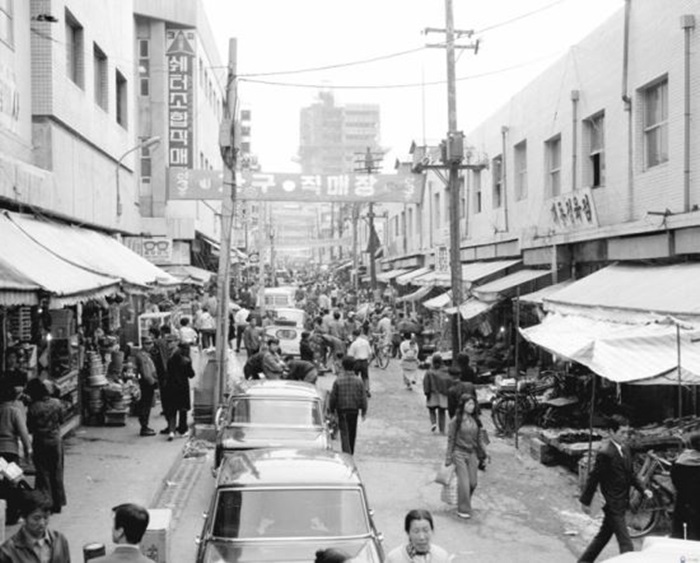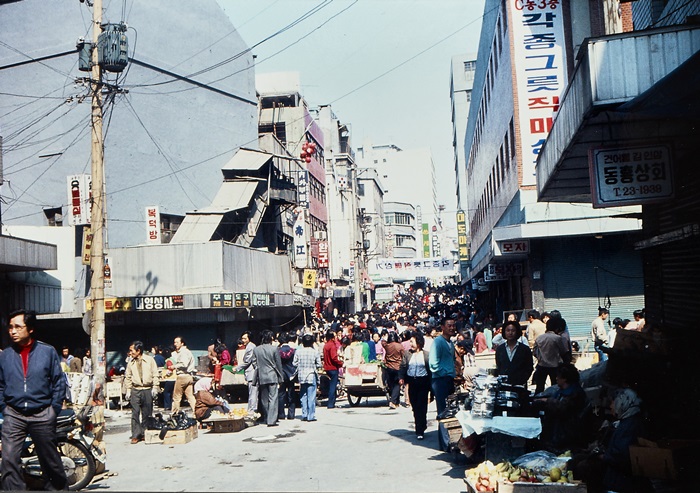
The photo of Changnaejang, a grain market that later became Namdaemun Market, is on display in the Seoul Museum of History’s special exhibition ‘Namdaemun Market.’ It was taken by Italian consul to Korea Carlo Rossetti in the early 1900s.
By Kang Gahui and Kim Young Shin
Photos = Seoul Museum of History
Namdaemun Market, one of the most representative marketplaces in the country and a must-visit site for visitors to Seoul, settled in its current location in 1897.
Korea’s first daily market in a city, Namdaemun Market was originally a grain market called Changnaejang (창내장, 倉內場). It was established in 1897 inside the warehouse of the Seonhyecheong (선혜청, 宣惠廳) tax office where rice, cloth and money were collected and distributed.
Namdaemun Market traversed the same hard times that inflicted the rest of the country: late Joseon, colonial occupation and then the fratricidal Korean War (1950-53).
Today, the market is one of Korea’s most representative marketplaces with more than 1,700 types of merchandise on sale and it attracts some 300,000 visitors and shoppers per day.

A bird’s-eye view taken in early 1940s shows what Namdaemun Market looked like in the past, in the top right of the photo.
"Namdaemun Market," a special exhibition currently open at the Seoul Museum of History, presents the past 120 years of the market.
Exhibits include 120 of the most popular products on sale there, from Joseon through to the present. Also, 27 photos and videos depict the changes made in the market and its merchandise. Grain, fruit, plates and clothes sold at the market during harsher times tell the story of the difficult life people had at certain times.
Items on display also reveal traces of the Dokkaebi Market. A dokkaebi is a type of goblin or malicious fairy, and Dokkaebi Markets are where people sold military supplies that had leaked off of U.S. military bases, such as U.S. cigarettes, U.S. Army uniforms, boots or canned goods.
Imported goods such as French cosmetics, which were not common in the 1960s or 1970s, and trendy Namnum fashion items in the 1980s also outline the history of the market.
The exhibition continues until July 2. Entrance is free, and the museum is closed every Monday except on national holidays.
More information can be found at the link below.
www.museum.seoul.kr
kgh89@korea.kr

This 1972 photo of central Namdaemun Market, in Jung-gu District, Seoul, shows that the place was just as crowded then as it is now.

This photo of Namdaemun Market in 1980 is on display at the ‘Namdaemun Market’ special exhibition currently underway at the Seoul Museum of History.